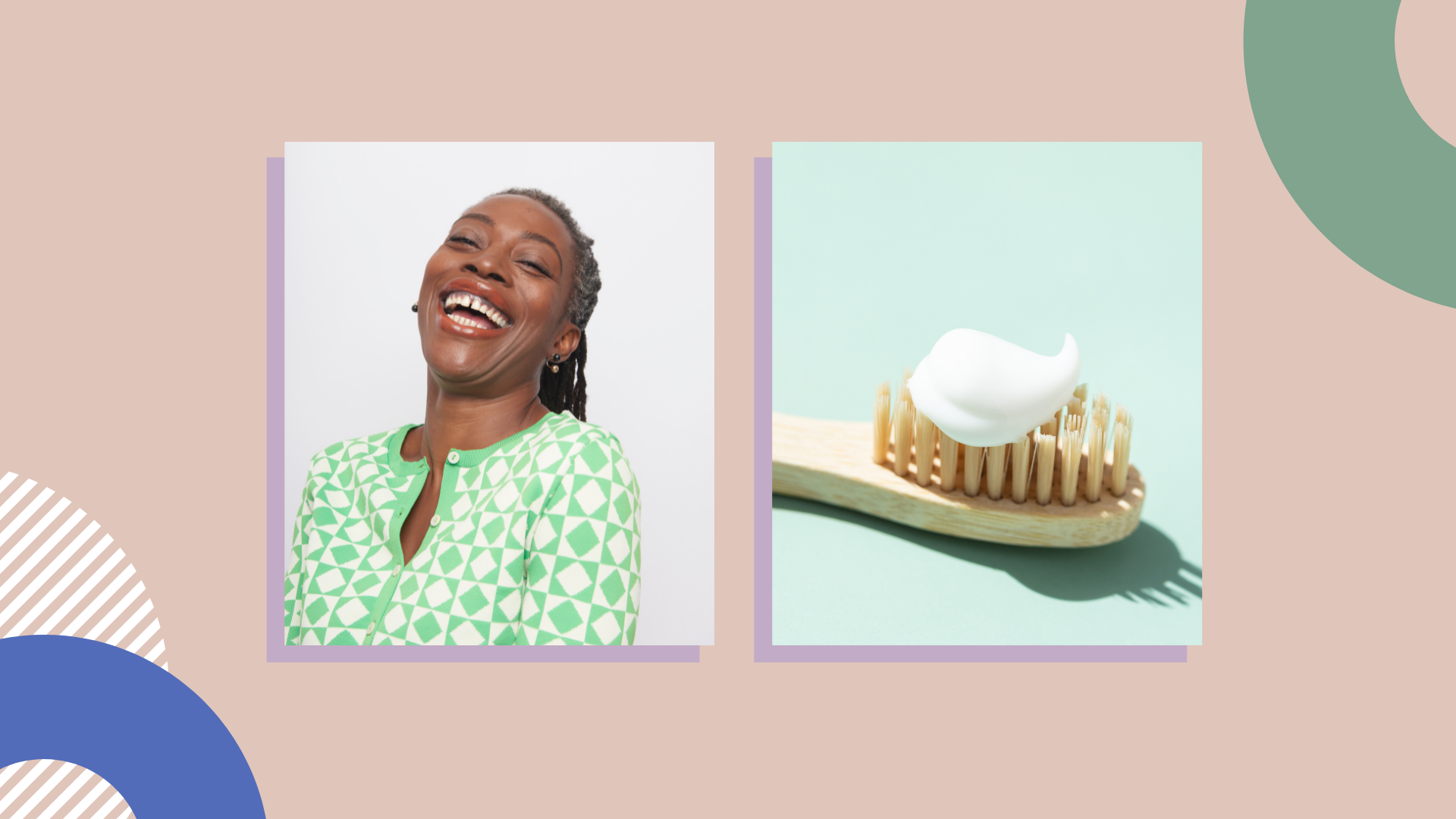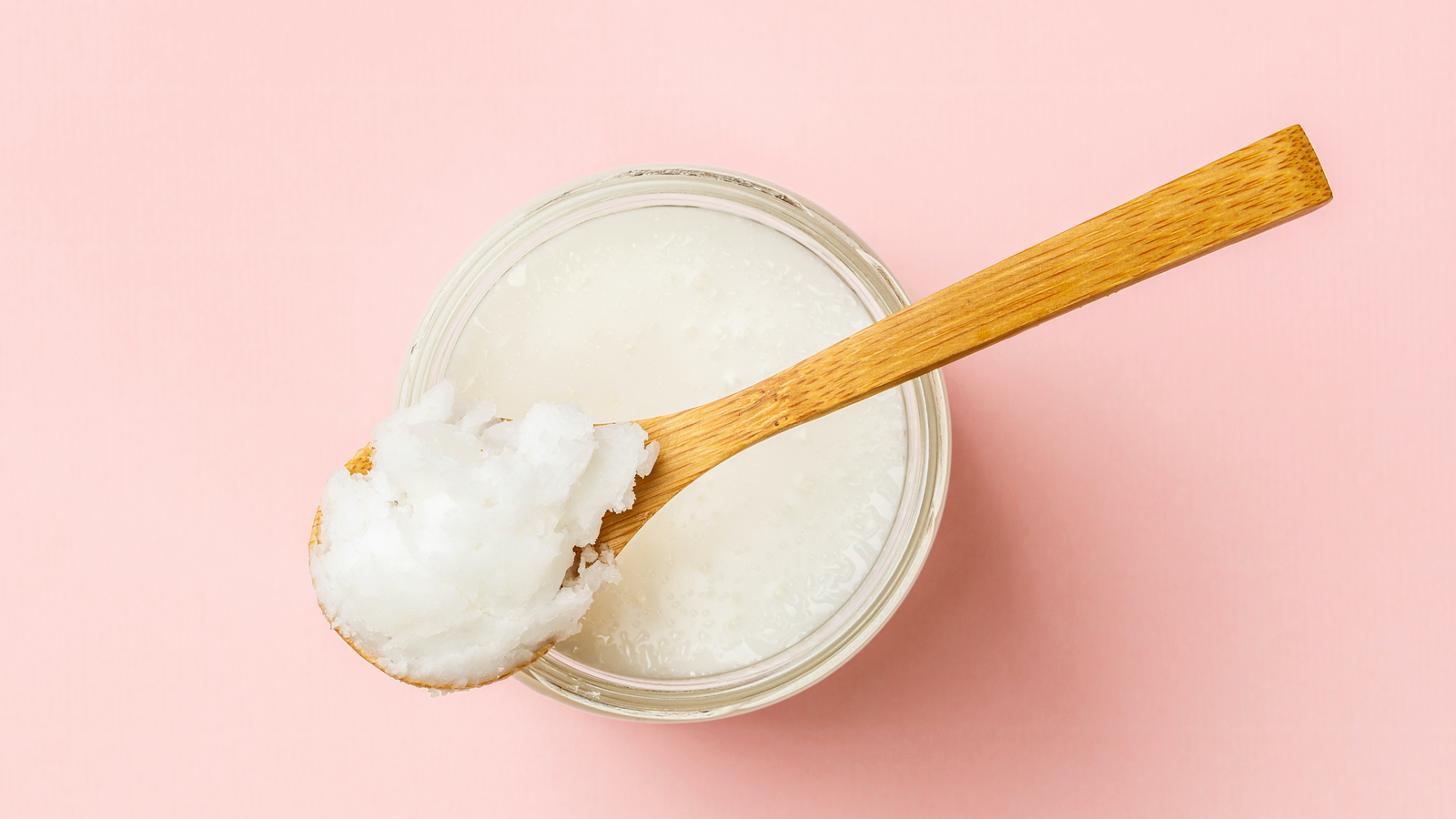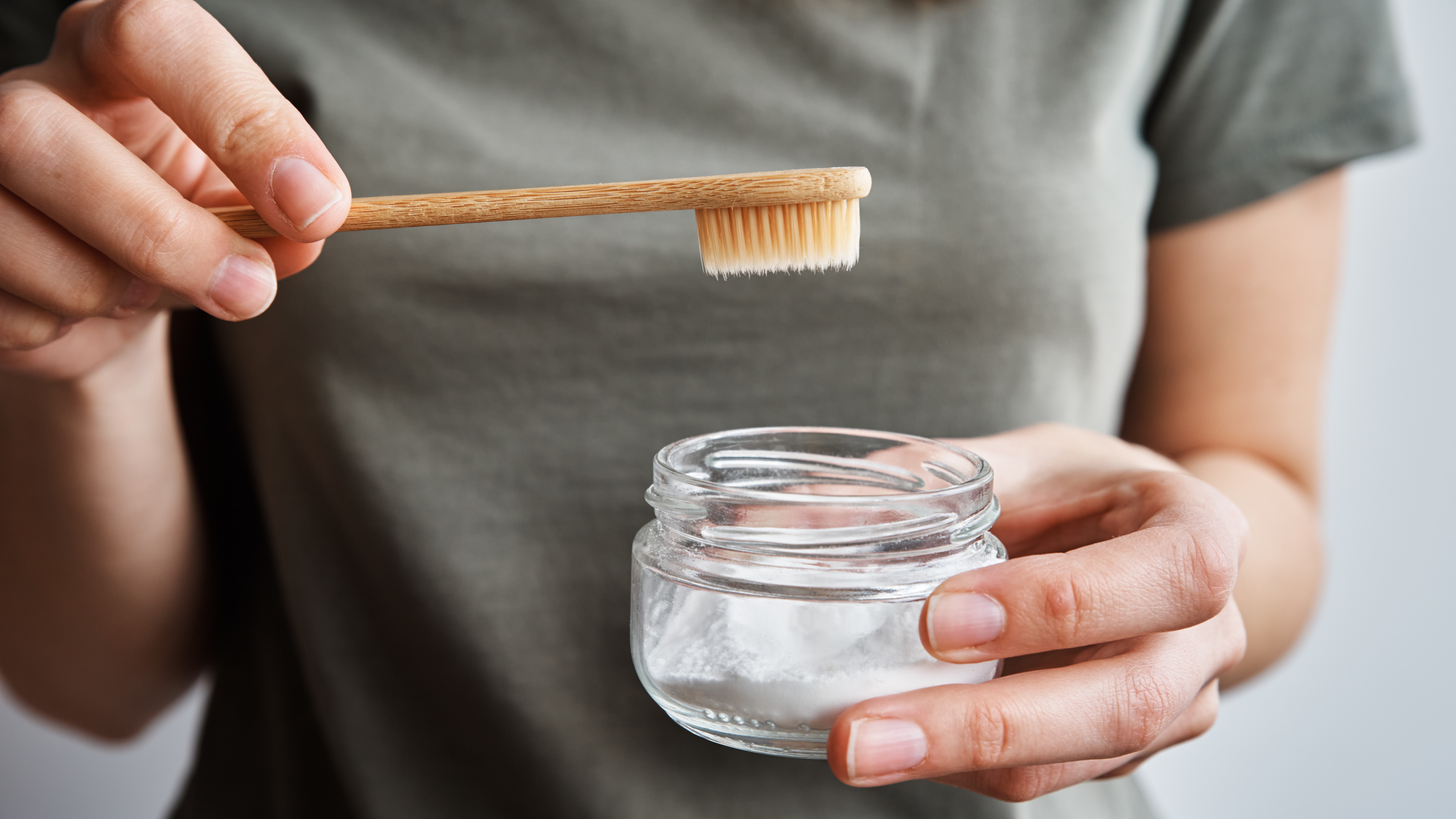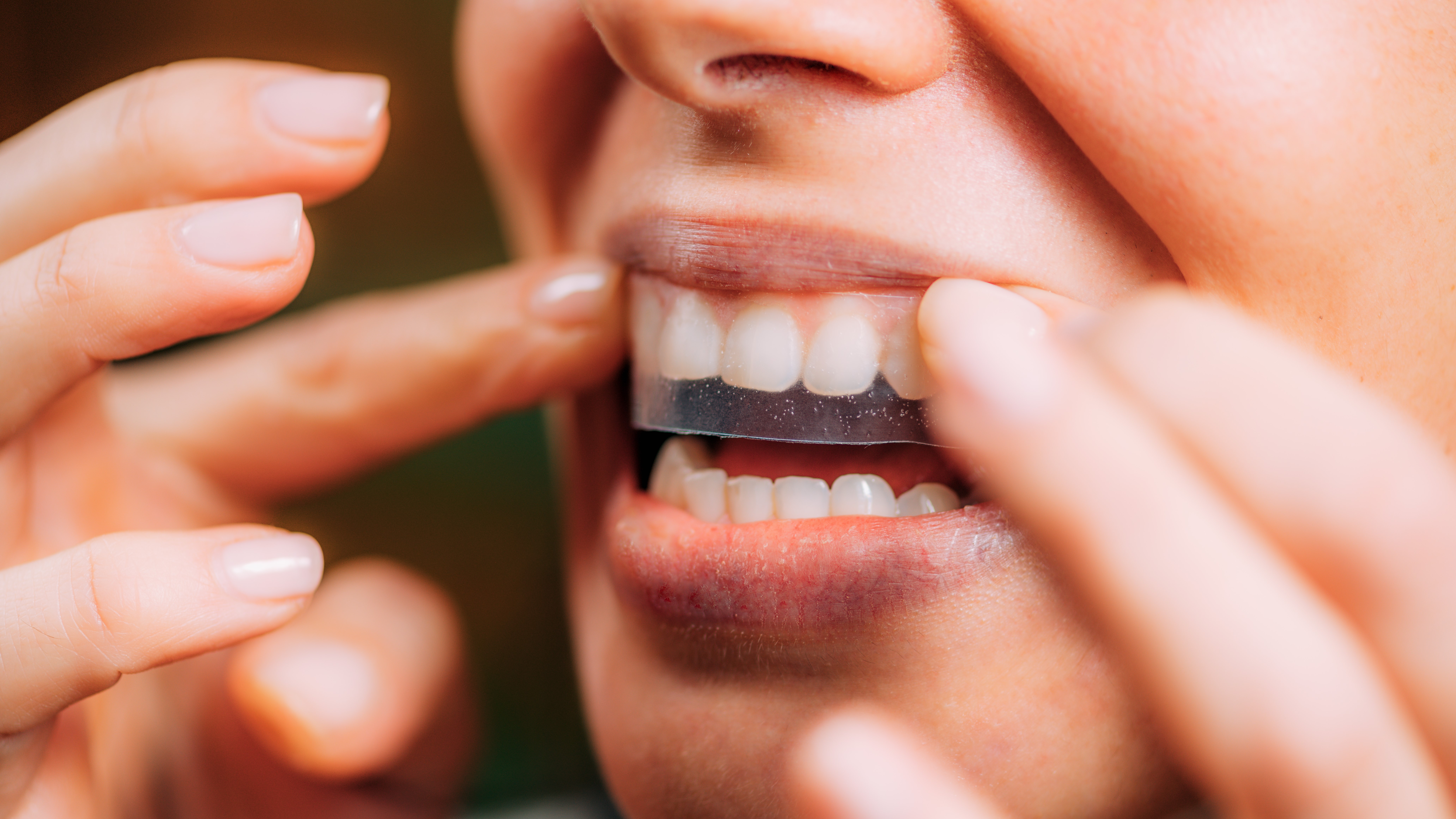How to whiten teeth at home—6 simple and effective tricks to try
Discover how to whiten teeth at home for dazzling results and a healthy smile


Knowing how to whiten teeth at home could be the secret to looking younger and feeling more confident—a bright, brilliant smile can take years off the clock.
"The lower third of your face is the most important anti-aging tool," says Dr Uchenna Okoye, Clinical Director of London Smiling Dentist Group. "We invest in cleansers, the best eye creams, and moisturizers for our skin but we don't always look after our smile so well.”
The good news? There’s a lot you can do to improve the appearance of your teeth, whether that’s investing in one of the best electric toothbrushes for effective cleaning, or you can whiten teeth naturally by tweaking your diet to avoid the food and drinks that stain. Plus, unlike pricey, professional teeth-whitening treatments, these at-home methods won't cost you a fortune.
How to whiten teeth at home
To restore your smile to its sparkling best, it's helpful to discover the reason behind the discoloration.
“Although yellow teeth can have a genetic cause, this cosmetic problem is prone to developing over time,” says Dr Richard Marques of Doctor Richard London clinics.
He explains that certain lifestyle choices such as smoking, drinking black tea, coffee, fizzy drinks and red wine, can affect the whiteness of your teeth.
“Yellowing can also be due to the erosion of enamel, caused by acids, teeth grinding and brushing your teeth with too much force,” explains Dr Marques.
Sign up for the woman&home newsletter
Sign up to our free daily email for the latest royal and entertainment news, interesting opinion, expert advice on styling and beauty trends, and no-nonsense guides to the health and wellness questions you want answered.
If you're worried about the color of your teeth, it’s a good idea to keep these habits to a minimum. These top teeth-whitening tricks will also help you to spruce them up at home.
1. Brush and floss well
Think you already know how to brush your teeth? Good oral hygiene is essential for a gleaming smile, so it might be time to refine your cleaning technique.
The only effective way to reduce plaque build-up and achieve truly clean teeth is with regular brushing, say Spotlight Oral Care dentists Dr Lisa Creaven and Dr Vanessa Creaven.
"We recommend brushing for three minutes at least twice a day, even if your teeth feel clean after one minute. And don’t forget that your toothbrush, or brush head, needs to be replaced every three months to work properly." Electric toothbrushes are great for this as they have pre-set cleaning programs that’ll keep you on track, along with a function that reminds you when it’s time to change the head.
It’s also better to go gently on your teeth and gums. “Instead of brushing them aggressively with a hard grip, try to hold your toothbrush at the very end and use a grip as if you’re holding a pen,” says Dr Hanna Kinsella of Kiln Lane Dental.
"This will reduce pressure to the brush and the teeth, therefore protecting them from damage. All of these things can contribute to whiter teeth."
Learning how to floss your teeth is important, too. If you forget to floss daily, you’re missing 40% of a tooth when cleaning it. "Flossing is essential for lifting the plaque and food debris that leads to decay. Plus, it's often the stains between teeth that ruin a lovely smile," says Dr Kinsella.
2. Try oil pulling

Gwyneth Paltrow (with her enviable pearly whites) has long been a fan of this Ayurvedic dental technique—and it's making a comeback as a natural way to boost dental health at home and make teeth shine.
A study by Yenepoya University shows that when practiced regularly and correctly, oil pulling contributes to overall oral hygiene by removing harmful bacteria in the mouth and banishing halitosis.
Want to give it a go? Before brushing your teeth, scoop a tablespoon of coconut oil into your mouth. Swish it around, sucking it through your teeth for 10 to 15 minutes before spitting it out into the bin. Then, continue with your usual teeth cleaning routine.
3. Tweak your diet
Do you love a glass of red or regularly enjoy curry? Unfortunately, our favorite food and drinks can be the reason behind discolored or dull-looking teeth.
"Chemical compounds called chromogens give certain foods and drinks their strong color and it's these that can stain our teeth," says Dr Rhona Eskander, dental expert for Waterpik. "In general, if something could stain your clothes or your tongue, the chances are it’s also going to stain your teeth."
Tea, coffee, red wine, fizzy drinks and fruit juices are all major culprits. "Tea and coffee both contain a substance called tannin that makes your teeth more likely to stain, however, there is some evidence that having more milk in your hot drinks helps to counteract this," says Dr Eskander.
Foods such as tomato-based sauces, curry, berries and even beetroot will often cause staining, too, she says. "Acids in some foods can also wear down your teeth, increasing the chances of stains setting in."
But, certain compounds in some foods actually have a teething-cleaning effect. Malic acid, found in strawberries, is known to naturally brighten teeth. To get the benefits, rub a ripe strawberry over your teeth as you would a skin exfoliator to remove superficial debris.
Try these teeth-friendly swaps:
- Swap coffee for matcha—"Matcha is a great alternative as it not only has a slow release of caffeine, it also appears to have protective properties that support gum health and possibly help to prevent tooth decay," says Elaine Tilling, Head of Clinical Education at TePe UK.
- Swap dark berries for pineapple—dark berries, such as blueberries, blackberries and raspberries can all stain your teeth, but pineapple is a good alternative. Tilling explains that "pineapple is the only fruit that contains a plaque fighting enzyme called bromelain that breaks up plaque and acts as a natural stain remover."
- Swap red wine for gin and tonic—"Not only is wine highly acidic, which can cause erosion to our tooth enamel, but red wine specifically is notorious for staining," says Tilling. Sipping gin and tonic (without a slice of lemon) through a sustainable straw is a better choice for reducing the risk of stains.
4. Brush with a whitening toothpaste

A stain-lifting paste is one of the easiest ways to shine up your smile, but make sure you use it carefully. Some whitening toothpastes contain ingredients that can be abrasive—which, when combined with a harsh brushing technique can increase the risk of removing enamel, making the tooth even more porous.
And while even the best whitening toothpastes work only to remove stains—so won’t lighten the color of teeth dramatically—a University of Toronto study found that toothpastes containing whitening ingredients are still more effective for brightening than using paste without them.
The common toothpaste ingredients that help to remove stains include:
- Sodium bicarbonate (baking soda)
- Magnesium carbonate or calcium carbonate
- Aluminum hydroxide or sodium hydroxide
- Hydrated silica
- Hydrogen peroxide
- Covarine
- Calcium phosphates
- Activated charcoal
Ask your dentist to recommend an effective whitening toothpaste and make sure the one you brush with also contains fluoride to protect against tooth decay.
5. Use baking soda
This pantry staple is commonly found in teeth-whitening products, but for a fraction of the price you can create your own whitening paste with baking soda. The bicarbonate of soda removes plaque and naturally gives teeth a whiter appearance, as well as neutralising acid in the mouth. Avoid using too much as it can weaken the enamel. Here's how to make your own at home:
- Mix 1/2 a teaspoon of bicarbonate of soda with 1/2 a teaspoon of water to create a paste.
- Dip in your toothbrush and brush your teeth for 1-2 minutes.
6. Try an at-home whitening kit

While shop-bought whitening products aren’t as powerful as the treatments delivered by dentists, they can still provide fantastic results at home.
Home-kits contain safe levels of hydrogen peroxide or carbamide peroxide that will lift stains and whiten enamel without harming the teeth or gums—and the demand for this quick fix has rocketed.
“Hydrogen peroxide and carbamide peroxide are widely agreed to be the safest and most effective chemicals to whiten teeth when properly administered,” says Dr Marques. “These whitening agents dissolve stains on the enamel when placed on the affected areas.”
But it is crucial to read the instructions, he adds. “Particularly, how long you are meant to keep the kit or strips affixed to the teeth, as the advice may vary from product to product.”
Wondering what to choose? Your at-home whitening options include:
- Teeth whitening kits—easy-to-use kits contain a low percentage of bleaching agent along with a dental tray to keep the whitening gel in close contact with the teeth. Some also have blue light technology to activate the whitening process. Results are usually seen over the course of several weeks’ use, but you should stop immediately if you experience any sensitivity. They should also be avoided if you have current issues with your oral health, such as receding gums or ulcers in the mouth.
- Teeth whitening strips—quick, cheap and effective, whitening strips are pre-coated with peroxide gel. They stick over the teeth for a specified period of time, to break down stains that have built up on the surface. Want to avoid chemicals? Look for strips with activated charcoal as the main ingredient.
- Teeth whitening pens—handy for a quick spruce up, whitening pens work to remove discoloration and brighten the color of your enamel. They are particularly effective for the precise targeting of stubborn stains. Brush a thin layer over dry teeth and wait before eating or drinking—or apply overnight.
To check that a whitening product is safe, always keep an eye out for the CE Mark and evidence that it conforms to the regulations of health, safety and environment protection standards in your region. To be safe, it’s also recommended that pregnant or breastfeeding women avoid using teeth-whitening kits.
Professional teeth whitening
If you’re not getting the diamond-white results you desire at home, then you might want to consider professional treatment. Pro-teeth whitening is a guaranteed way to knock out staining and get your teeth glimmering.
There are two professional methods: dentist-prescribed home whitening—which uses a higher level of bleaching agent than is found in shop-bought kits, or in-chair whitening that’s carried out at a dental surgery and often gives instant results.
If teeth are whiter, you appear younger. But make sure that you choose the right shade of white to avoid a false, perma-white look.
"Darker hair and skin tones should be cautious about going too white-white, whereas paler skins, blondes and redheads can deal with much whiter teeth," explains Dr Okoye. For a natural result, only go up to seven shades lighter than your existing color.
woman&home thanks Dr. Uchenna Okoye, Clinical Director of London Smiling Dentist Group; Dr. Richard Marques of Doctor Richard London clinics; dentists Dr. Lisa Creaven and Dr. Vanessa Creaven of Spotlight Oral Care; dental expert for Waterpik, Dr Rhona Eskander; Dr Hanna Kinsella of Kiln Lane Dental; and Elaine Tilling, Head of Clinical Education at TePe UK; for their time and expertise.
Senior Health Writer Ali Horsfall has almost 15 years experience as a journalist and has written for national print titles and women’s lifestyle brands including woman&home, Woman, Woman's Own, BBC magazines, Mothercare, Grazia and The Independent. She currently specialises in health and fitness content and loves sharing the best expert advice on staying well.